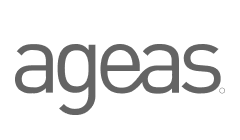Blue week’s weakness
As the euro hit a three-year high on Thursday morning, surging above $1.24, the financial market attention was focused on the upcoming meeting of the European Central Bank. How to address the euro’s surge was a recurring question as the euro has gained more than 2% against the dollar since the beginning of the year, following on from the sharp increase initiated a year ago. Indeed in 2017, the euro registered its highest yearly increase against the dollar since 2003, rising from $1.04 in January to $1.20 at year-end, underpinned by economic growth in the Eurozone.
The ECB meeting did not however halt the euro’s rally. To the contrary, after the meeting the euro jumped above $1.25. President Draghi announced his intention to keep the benchmark interest rate unchanged in 2018 and to pursue the asset purchase programme until September. An upbeat tone on medium-term inflation and market sentiment that easy monetary policy is coming to an end, pushed up the euro as well as government bond yields. The yield on 10-year German bonds hit its highest level in two years at 0.64%.
With respect to the Ageas share, Monday, which as Blue Monday – the third Monday of January – was supposed to be the most depressing day of the year, was actually a positive day. It marked the fifth upward oriented trading day in a row. Blue week might be a more accurate concept as this was unfortunately followed by a three-day decline and, even though the Ageas share price partially recovered on Friday, it closed down 0.2% on the week, in line with the general trend of the sector (-0.7% for the Stoxx Insurance index). However, if one looks at the year-to-date performance, there is really no reason to feel blue as Ageas’ shares enjoyed an overall increase of 6.2% since the beginning of the year, less than a month ago!
